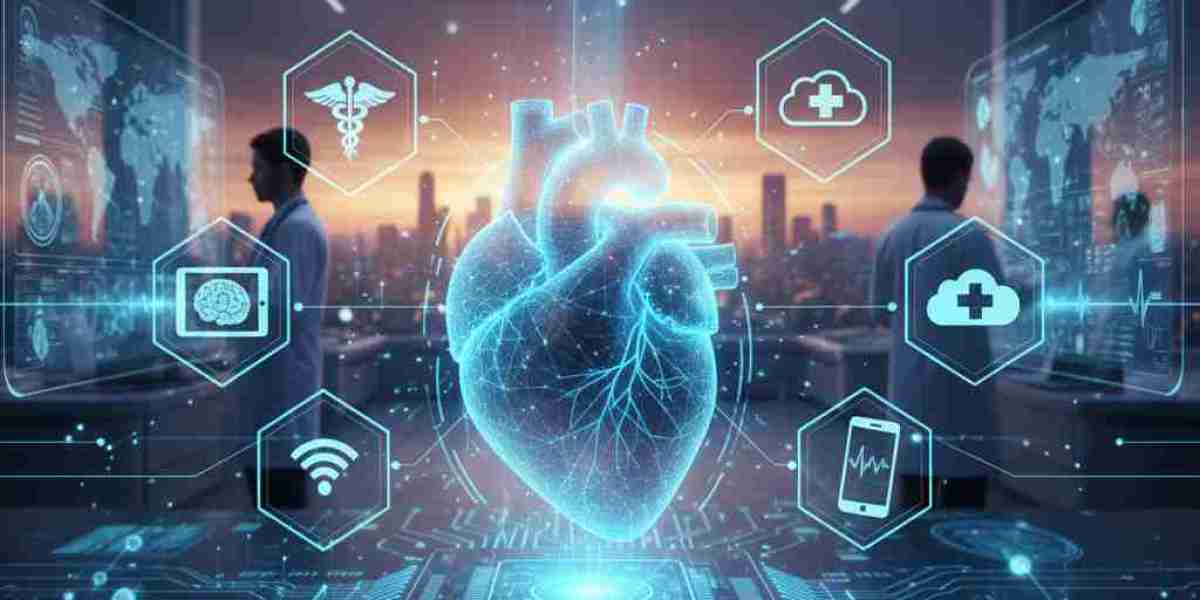The rapid evolution of technology has ushered in a new era for healthcare, one where the lines between traditional medical equipment and software are blurring. At the heart of this transformation is a powerful concept: Software as a Medical Device (SaMD). Unlike software that simply controls a hardware device, SaMD is a standalone program designed for a medical purpose, running on general-purpose platforms like smartphones, laptops, or cloud servers. Its ability to diagnose, monitor, or treat conditions independently has made it a central pillar of digital health, promising a future of more accessible, personalized, and efficient patient care.
The rise of SaMD is not just a technological shift; it's a fundamental change in how medical solutions are developed, delivered, and regulated. It allows for a new level of agility and innovation that traditional hardware devices simply cannot match. From diagnostic apps that detect skin cancer to AI-powered software that analyzes MRI scans, SaMD is empowering patients and clinicians alike. Understanding its role and potential is essential for anyone invested in the future of medicine.
Defining SaMD: A New Category of Medical Technology
Before we can appreciate its impact, it's crucial to understand what software as a medical device is—and what it is not. The International Medical Device Regulators Forum (IMDRF) provides the widely accepted definition: "software intended to be used for one or more medical purposes that perform these purposes without being part of a hardware medical device."
This distinction is key. For example, the software that controls an insulin pump's motor is software in a medical device (SiMD) because it's an integral part of the hardware. In contrast, an app that uses a smartphone's camera to analyze skin lesions for signs of melanoma and provide a risk assessment is a true software as a medical device. It operates on a general-purpose device and provides a medical function on its own.
SaMD is a broad and diverse category, with examples spanning from wellness apps to life-sustaining applications. They can be classified by their risk, from low-risk apps that help manage health and wellness to high-risk software that is used for diagnostics or treatment in critical conditions. This risk-based approach is central to its regulation and development.
The Driving Force Behind Innovation
SaMD is a catalyst for innovation in healthcare, primarily due to its unique characteristics:
1. Agility and Rapid Development: Unlike hardware-based devices that require lengthy, expensive, and complex manufacturing processes, SaMD can be developed, updated, and deployed with incredible speed. Software can be refined and improved through iterative cycles, allowing developers to respond to new data, integrate user feedback, and quickly fix bugs or vulnerabilities. This "fail-fast, learn-faster" model is crucial for staying ahead of the curve in a rapidly changing digital landscape.
2. Accessibility and Scalability: Because software as a medical device runs on ubiquitous devices like smartphones, it bypasses the need for costly, dedicated medical equipment. This democratizes access to advanced medical tools, enabling patients in remote areas or developing countries to benefit from technologies once confined to high-end hospitals. The scalability of software is virtually limitless; once developed, an SaMD can be distributed to millions of users with minimal additional cost.
3. Data-Driven Insights and Personalization: SaMD's ability to collect and analyze real-time patient data is perhaps its most significant contribution. By leveraging sensors in smartphones or wearables, these applications can track a person's health over time, providing a continuous stream of data for analysis. This leads to more personalized care, as clinicians can use these insights to tailor treatment plans, monitor a patient’s progress, and intervene proactively. AI and machine learning are central to this capability, allowing SaMD to process vast data sets and identify patterns that would be impossible for a human to see. For example, AI-powered SaMD can analyze medical images with an accuracy that, in some cases, rivals or even surpasses human radiologists.
A New Regulatory Frontier
The unique nature of software as a medical device has prompted a major rethinking of regulatory frameworks around the world. Agencies like the U.S. Food and Drug Administration (FDA) and the European Union’s European Medicines Agency (EMA) are developing new guidelines to ensure these products are safe and effective.
The FDA's focus, for instance, has shifted toward a more adaptive and patient-centric approach. They are working on frameworks that can accommodate the continuous learning and iterative updates that are characteristic of AI-driven SaMD. This includes the development of the "Predetermined Change Control Plan," which allows manufacturers to make specific, pre-defined changes to their algorithms without requiring a new submission for every single update.
However, the regulatory landscape for SaMD remains complex. Key challenges include:
· Cybersecurity: As SaMD applications collect and process sensitive patient data, they are prime targets for cyberattacks. Robust cybersecurity measures are not just an add-on; they are a fundamental requirement for regulatory approval.
· Data Quality: The effectiveness of any AI-driven SaMD is dependent on the quality and integrity of the data it's trained on. Regulatory bodies are increasingly scrutinizing data sources and validation processes to mitigate bias and ensure accuracy.
· Clinical Validation: Demonstrating clinical validity for a rapidly evolving software product is different from validating a static hardware device. Regulators need evidence that the software provides a meaningful medical benefit and that its performance is consistent over time.
The Future of SaMD: A Glimpse into Tomorrow
Looking ahead, the role of software as a medical device is set to expand exponentially, driven by several key trends:
1. AI-Powered Diagnostics and Predictive Analytics: The integration of AI and machine learning will lead to SaMD that can not only diagnose but also predict future health risks. For example, an application could analyze a patient's historical data, lifestyle, and genetic information to predict their likelihood of developing a chronic illness, allowing for proactive, preventive interventions.
2. Digital Therapeutics (DTx): DTx is a rapidly emerging category of SaMD that delivers therapeutic interventions directly to patients to treat, manage, or prevent a broad spectrum of diseases. These are not just apps that track a user's behavior; they are clinically validated tools that can treat conditions like anxiety, insomnia, or even substance abuse.
3. Interoperability and Ecosystem Integration: The future of digital health lies in interconnected ecosystems. SaMD will increasingly be designed to seamlessly integrate with Electronic Health Records (EHRs), wearable devices, and other healthcare platforms, creating a holistic view of a patient's health. This will enable better care coordination and break down the data silos that have historically plagued the healthcare industry.
4. Remote Patient Monitoring: SaMD will make remote patient monitoring the norm rather than the exception. By leveraging sensors and devices, a doctor can continuously monitor a patient's vital signs from afar, enabling better management of chronic diseases and reducing the need for frequent in-person visits. This shifts healthcare from a reactive model to a continuous, proactive one.
Conclusion
The evolution of software as a medical device is not just about bringing technology to healthcare; it's about fundamentally reshaping the relationship between patients, providers, and medical data. By enabling faster innovation, improving accessibility, and providing data-driven insights, SaMD is breaking down the barriers of traditional medicine.
While challenges remain, particularly in the areas of regulation, cybersecurity, and clinical validation, the momentum behind SaMD is undeniable. It is a critical component of the digital health revolution, promising a future where healthcare is more personalized, proactive, and accessible to all. For those in the healthcare and technology sectors, embracing SaMD is not just a strategic choice—it's a commitment to building a healthier future for all.







